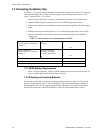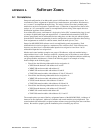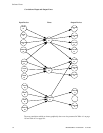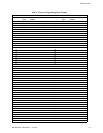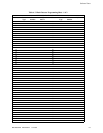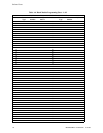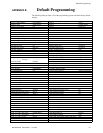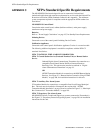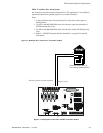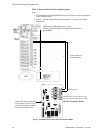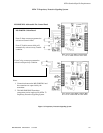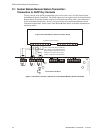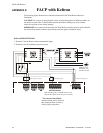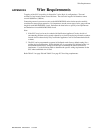NFPA Standard-Specific Requirements
198 MS-9200UDLS PN 52750:E1 01/27/09
APPENDIX C NFPA Standard-Specific Requirements
The MS-9200UDLS has been designed for use in commercial, industrial and
institutional applications and meets the requirements for service under the National Fire
Protection Association (NFPA) Standards outlined in this Appendix. The minimum
system components required for compliance with the appropriate NFPA standard are
listed below:
MS-9200UDLS Control Panel
Contains the main control board, cabinet (backbox and door), main power supply
transformer and power supply.
Batteries
Refer to "Power Supply Calculations" on page 187, for Standby Power Requirements.
Initiating Devices
Connected to one of the control panel's Initiating Device Circuits.
Notification Appliances
Connected to the control panel's Notification Appliance Circuits via a control module.
The following additional equipment is needed for compliance with the NFPA 72
standards listed below:
NFPA 72 NATIONAL FIRE ALARM STANDARDS FOR:
NFPA 72 Central Station Service (Protected Premises Unit) or Remote Station
Service
Onboard Digital Alarm Communicator Transmitter for connection to a
compatible listed Central Station DACR or Protected Premises
Receiving Unit. This unit must be installed as outlined in "Digital
Alarm Communicator/Transmitter" on page 19.
OR
4XTMF Transmitter Module for connection to the RS82 Remote Station
Receiver. See Figure C.2, “Remote Station Connection Using 4XTMF
Module,” on page 200, for installation instructions for this unit.
NFPA 72 Auxiliary Fire Alarm System
F Transmitter Module for connection to a compatible listed Local Energy Municipal
Box. This unit must be installed as illustrated in the section titled "4XTMF
Transmitter Module Installation" on page 56 and as outlined in Figure C.1, “Municipal
Box Connected to F Transmitter Module,” on page 199.
NFPA 72 Proprietary Fire Alarm System
MS-9200UDLS Alarm, Trouble and Supervisory contacts connected to Transmitter(s).
See Figure C.3, “Proprietary Protective Signaling System,” on page 201, for installation
instructions for this unit.



